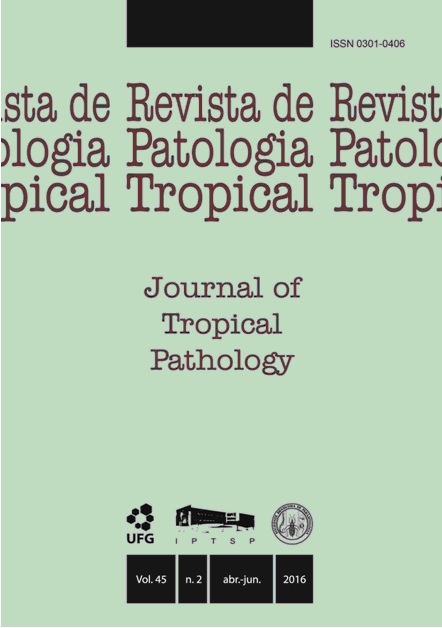TOXICITY OF HEXANIC AND METHANOLIC FRACTIONS FROM Copaifera reticulata DUCKE (LEGUMINOSAE – CAESALPINOIDEA) AGAINST Aedes aegypti LINNAEUS (DIPTERA – CULICIDAE), IN FIELD ASSAYS
DOI:
https://doi.org/10.5216/rpt.v45i2.41773Keywords:
Dengue, yellow fever, chikungunya, natural products.Abstract
The three most common artificial containers found in natural environmental conditions, are discarded tires, plastic and glass objects. These were tested to verify the effectiveness of hexanic (CRH) and methanolic (CRM) fractions of the oil-resin, from Copaifera reticulata (Ducke) (Leguminosae-Caesalpinoideae) against 3rd instar larvae of Aedes aegypti (Linnaeus) (Diptera - Culicidae). Larvicidal activity was noted in all the containers, varying according to type. The glass and plastic containers interfered less in the larvicidal activity than the tires. The most promising fraction was CRH1, which presented 18.2 of LC90. Glass containers and tires presented LC90 of 18.8 and 42.8 ppm respectively.
Downloads
Downloads
Published
How to Cite
Issue
Section
License
The manuscript submission must be accompanied by a letter signed by all authors stating the full name and email address, confirming that the material has not been published or is under consideration for publication elsewhere, and agreeing to transfer copyright in all media and formats for Journal of Tropical Pathology. The authors will not be paid for published articles. They are solely responsible for the content of those articles, even if the Editor holds the right to adjust them to the norms of the journal.
The reviewers will not be paid for the peer review process.

